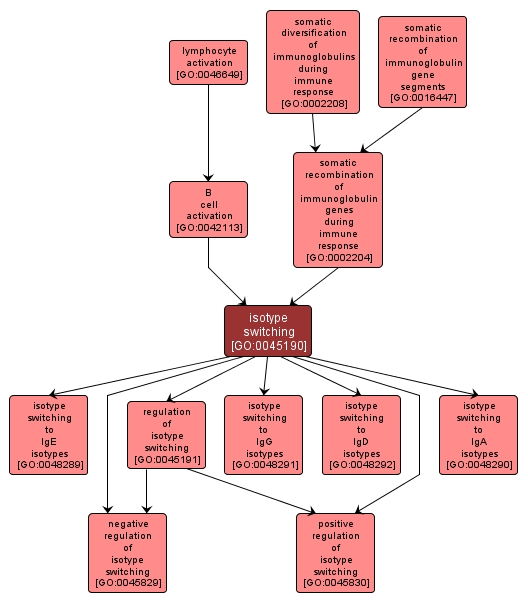| Desc: |
The switching of activated B cells from IgM biosynthesis to biosynthesis of other isotypes of immunoglobulin, accomplished through a recombination process involving an intrachromosomal deletion involving switch regions that reside 5' of each constant region gene segment in the immunoglobulin heavy chain locus. |














